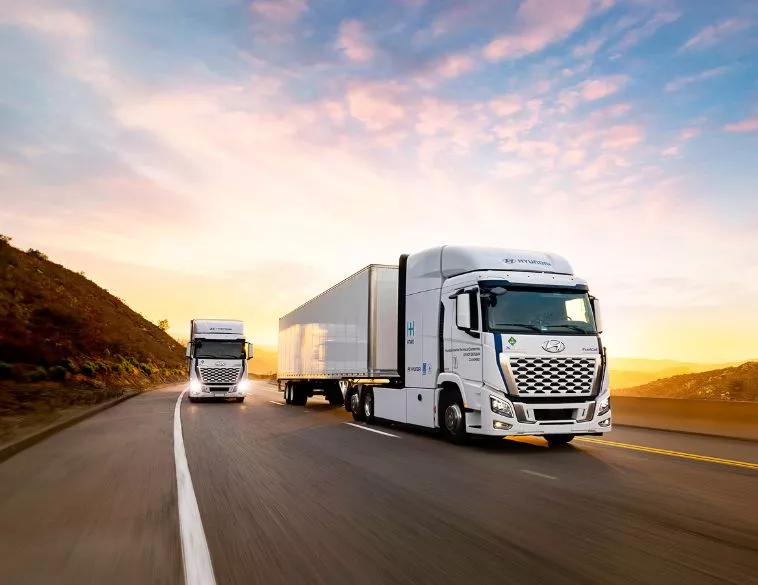Toyota Debuts Stylish, Powerful 2026 C-HR Battery Electric Vehicle
Toyota announces the all-new 2026 Toyota C-HR Battery Electric Vehicle (BEV), an all-new model set to be a bold entry in its electrified lineup. In Canada, the 2026 C-HR will be available in Front-Wheel Drive (FWD) with a 221 horsepower combined system output and a manufacturer-estimated all-electric range rating of up to 500 km*, or All-Wheel Drive (AWD) with an impressive 338 horsepower combined system output, a manufacturer-estimated 0-100 km/h time of around 5.2-second and a manufacturer-estimated all-electric range rating of up to 465 km*. The C-HR couples its dynamic performance with a coupe-like design, a well-appointed interior, and up to 720 Litres of rear cargo space behind the rear seats.
The 2026 C-HR BEV brings cutting-edge style and high-tech features across the board. It will be powered by a 77-kW battery, and it will be equipped with a North American Charging System (NACS) port, giving it access to thousands of DC charging stations nationwide. It will also be capable of charging on Level One and Level Two AC power sources. Steering wheel-mounted paddle shifters that control regenerative braking power are also standard. When activated, four different levels of regenerative braking power can be selected to convert kinetic energy to electric energy, adding charge to the traction battery.
Two sporty trims offered
The 2026 C-HR will be offered in two sporty trims in Canada, SE (FWD) and XSE AWD. Key standard interior features include a 14-inch touchscreen that runs the Toyota Multimedia system, a fully digital gauge cluster, dual wireless chargers in the centre console, and the Toyota Safety Sense 3.0 system. The cabin also brings comfort, with seating choices from fabric and SofTex®-trim to synthetic suede and SofTex-trim.
On the outside, key standard equipment like a power liftgate, low-profile roof rails, and rain-sensing wipers bring functional value. There will be 18-inch and 20-inch wheel options and a variety of available exterior paint colours in single and two-tone paint options.
Developed from a compact BEV concept Toyota first presented in 2022, the new C-HR BEV is the 20th electrified model to be added to the Toyota lineup. The model carries forward a multi-pathway powertrain approach, with a variety of models available to fit customers’ lifestyles, including BEV, Hybrid, Plug-in Hybrid, and Fuel Cell.
*Ranges and charging times will vary depending on weather and other factors.
Spacious style
The Toyota C-HR BEV is designed as an expression of the fun-to-drive, exhilarating character of electric vehicles. Built on Toyota’s dedicated e-TNGA battery electric vehicle platform, its flowing body lines and wide stance convey a dynamic drive. The vehicle’s compact coupe silhouette is formed by Toyota’s signature hammerhead front end flowing seamlessly into a compact cabin and angular rear.
The C-HR has compact crossover proportions with an overall length of 4,520 mm, overall width of 1,870 mm, wheelbase of 2,750 mm, and overall height 1,595 mm. This helps give it spacious accommodation, with generous headroom and ample cabin space.
The interior design is clean and open, with a slim driver’s display and easy-to-access center console. For an added touch, it also has customizable ambient lighting for setting just the right mood. Altogether, it has a comfortable, high-tech cabin that is stylish and functional.
It also provides drivers and passengers alike with plenty of comfort and convenience, such as two wireless smartphone chargers and rear cabin USB ports to ensure everyone on board can be connected when on the move; rear cabin air conditioning controls; and an available panoramic roof that brings natural light to all parts of the interior.
Electrifying performance
In Canada, the 2026 Toyota C-HR BEV will either be available in Front-Wheel Drive, or All-Wheel Drive with electric motors housed in the front and rear eAxles. Altogether, the AWD model is expected to be capable of going from 0 to 100 kilometres per hour in around 5.2 seconds. Its coupe-like lines are complemented by a low center of gravity, thanks to the underfloor-mounted battery pack that is surrounded by a cross-framing structure for overall vehicle rigidity. In addition to the fundamental strength, rigidity and agility of the dedicated BEV platform, suspension parts have been precisely tuned for the new C-HR, including spring and damper performance and the stiffness of the anti-roll bars.
The C-HR will be equipped a lithium-ion battery with a total capacity of 77-kWh and an 11-kW on-board AC charger. It will have a NACS charging port that is compatible with Level Three DC fast-charging, giving it access thousands of high-speed charging stations nationwide. When using fast charging, the C-HR can recharge from 10% to 80% battery capacity in around 30 minutes under ideal conditions. The 2026 C-HR will also be capable of charging on Level One and Level Two AC power sources.
A battery pre-conditioning function is also included on C-HR. This system brings the battery to an optimal temperature for DC fast charging, enabling faster charging in colder climates. This function can be activated manually or automatically by setting the navigation system destination to a fast-charging station.
The 2026 C-HR also features steering wheel-mounted paddle shifters to activate and adjust regenerative braking. Regenerative braking is the process of converting energy created by the movement of the vehicle, also known as kinetic energy, into electrical energy. The driver can adjust the amount of regenerative braking power from four levels using the paddle shifters.
Two style and value-packed grades
The all-electric 2026 C-HR will be available in an SE (FWD) and XSE AWD grade. Exterior paint options on both grades will include the all-new Overcast and Tandoori colours, along with Cement, Midnight Black Metallic, and Wind Chill Pearl (premium paint option). The XSE will also have two-tone paint available, including the combination of Tandoori, Cement, or Wind Chill Pearl with a Midnight Black Metallic Roof.
Key features by grade include:
SE (FWD)
*Manufacturer estimated 500 km all-electric driving range rating*
- 221 horsepower combined system output
- 11-kW onboard AC charger
- Dual-voltage A/C charging cable
- NACS charging port
- 18-in. wheels with black alloy inserts
- Power liftgate
- Rain-sensing wipers
- Low profile roof rails
- Fabric/SofTex trimmed seating with 8-way power driver seat and 6-way manual passenger seat
- Heated front seats and heated steering wheel
- 14-in. touchscreen with Toyota Multimedia system
- Two front wireless Qi chargers
- Three USB-Type C ports (one front, two rear)
- Toyota Safety Sense 3.0
- Front & Rear Parking Assist with Automatic Braking
- Blind Spot Monitor
XSE AWD (adds to or replaces SE features with):
- Manufacturer estimated 465 km all-electric driving range rating*
- 338 horsepower
- SofTex and synthetic suede-trimmed seats
- 8-way power passenger seat
- Driver memory seat
- Digital Rearview Mirror with HomeLink®
- Traffic Jam Assist
- Lane Change Assist
- Panoramic View Monitor
The available Technology Package on the XSE AWD adds:
- 20-in. gun metal finished wheels
- Panoramic moonroof
- Rear heated seats
- JBL® Premium Audio system with 9 speakers
Intuitive Connected Tech
Modern convenience also comes standard on the 2026 Toyota C-HR BEV, as it will come with a 14-inch touchscreen that runs the Toyota Multimedia system, designed and engineered by Toyota’s Connected Technologies team. It also comes with a host of Toyota Connected Services trials.
The Drive Connect 3-year trial gives access to Intelligent Assistant, Cloud Navigation and Destination Assist. With Intelligent Assistant, simple phrases like “Hey Toyota” awakens the system for voice activated commands to search for directions, find Points of Interest (POI), adjust audio controls, change the cabin temperatures and more. Cloud Navigation, the available onboard navigation solution, utilizes the cloud to download the latest available map, traffic and routing information. To ensure users have the most up-to-date search capabilities, POI search is provided by Google Points-of-Interest data. Destination Assist also gives access to 24/7 live agent assistance to locate the next destination.
All Toyota C-HR models are equipped with a six-speaker audio system for enjoying entertainment while on-the-go. For those looking for an enhanced audio experience, a JBL® Premium Audio system with 9 speakers, including an 8-channel 800-watt amplifier and 9-inch subwoofer will also be available.
The Toyota Multimedia system also allows for dual Bluetooth phone connectivity, with support for standard wireless Apple CarPlay® and Android Auto™ compatibility, adding to the already robust offering of audio playback ability with HD Radio, USB data and a SiriusXM® 3-month trial subscription.
The C-HR also comes with a 5-year minimum trial subscription for both Safety Connect and Service Connect. Safety Connect includes an Emergency Assistance Button (SOS), 24/7 Enhanced Roadside Assistance, Automatic Collision Notification and Stolen Vehicle Locator. Service Connect gives drivers the capability to receive Vehicle Health Reports, Maintenance Alerts and reminders.
With the Toyota App, users can stay connected to their C-HR with Remote Connect**, included as a 3-year trial. With Remote Connect, users can activate headlights, a horn alert, buzzer and unlock the rear hatch. The remote climate features include the ability for in-cabin temperature controls, including remote activation of the available seat heaters/ventilators, steering wheel heater, defroster, and the ability to schedule a timer to activate in a daily routine.
Remote charging capabilities are also included with Remote Connect trial or subscription on the C-HR, which includes the ability to check charging status, start/stop charging with a vehicle that is already plugged in and even edit charging schedules, allowing for enhanced controls of the C-HR’s charging. The Toyota App also provides an easy-to-use map to find charging station locations near you or along your route.
Active safety & driver assist technology
The C-HR features Toyota Safety Sense 3.0™, Toyota’s suite of active safety and driver assistance features designed to support driver awareness, decision-making, and vehicle operation. Please note that Toyota Safety Sense 3.0 systems and driver assist features are not a substitute for safe and attentive driving, you can find an online version of the Owner’s Manual here for instructions and limitations.
The safety suite includes:
- Pre-Collision System with Pedestrian Detection: Pre-Collision System with Pedestrian Detection (PCS w/PD) is designed to help detect a vehicle, pedestrian, bicyclist, or motorcyclist and provide an audible/visual forward-collision warning under certain circumstances. If you don’t react, the system is designed to provide automatic emergency braking.
- Full-Speed Range Dynamic Radar Cruise Control: Full-Speed Range Dynamic Radar Cruise Control (DRCC) is an adaptive cruise control system that is designed to be set at speeds above 32 km/h. DRCC uses vehicle-to-vehicle distance control to help maintain a preset distance from the vehicle ahead of you.
- Lane Departure Alert with Steering Assist: Lane Departure Alert with Steering Assist (LDA w/SA) detects lane markings or the road’s edge at speeds above 50 km/h. LDA w/SA is designed to provide an audible/visual warning if an inadvertent lane departure is detected. If no corrective action is taken, Steering Assist is designed to provide gentle corrective steering for lane-keeping assistance.
- Lane Tracing Assist: Lane Tracing Assist (LTA) is designed to help keep the vehicle in the centre of a lane. LTA assists the driver with steering control while DRCC is in use.
- Road Sign Assist: Road Sign Assist (RSA) uses the forward-facing camera to recognize specific road signs, such as speed limit, stop, and yield signs. RSA provides sign information to the driver via the Multi-Information Display
- Automatic High Beams: Automatic High Beams (AHB) is designed to detect headlights of oncoming vehicles and taillights of preceding vehicles. AHB automatically toggles between high and low beams as appropriate.
- Proactive Driving Assist: Proactive Driving Assist (PDA) uses the vehicle’s camera and radar, when system operating conditions are met, to provide gentle braking and/or steering to support driving tasks such as distance control between your vehicle and a preceding vehicle, pedestrian, or bicyclist. PDA can also provide gentle braking into curves.
For complete details on TSS 3.0, please visit Toyota.ca/safety-sense.
Blind Spot Monitor with Rear Cross-Traffic Alert is also standard. The BSM system uses rear side radar sensors installed on the inner side of the rear bumper, on both the left and right sides, to assist the driver in confirming safety when changing lanes. The RCTA function uses the same sensors installed behind the rear bumper. This function is intended to assist the driver in checking areas that are not easily visible when backing up.
Safe Exit Alert is also standard on the C-HR. This system is designed to detect vehicles or cyclists approaching from the rear and judge if there is a possibility of a collision with an open door or passengers who are exiting. Safe Exit Alert will illuminate an indicator in the outer mirror and provide an audible alert to notify vehicle occupants.
The Toyota C-HR is also equipped with Toyota’s Star Safety System, standard. This system includes Vehicle Stability Control (VSC), Traction Control (TRAC), Anti-lock Brake System (ABS), Electronic Brake-force Distribution (EBD), Brake Assist (BA) and Smart Stop Technology® (SST).
Driver assistance features include Traffic Jam Assist, Lane Change Assist, and Front Cross-Traffic Alert, standard.
In terms of battery safety, Toyota uses many measures to help protect cell integrity, thanks to the design and a multiple monitoring system intended to protect the vehicle’s battery system. This includes:
- Redundant monitoring of battery voltage, current and temperature designed to detect signs of abnormal heating to maintain optimal battery temperature and help prevent cell damage
- Utilization of a high-resistance coolant circulation system is designed to help prevent a thermal event from short circuits even in high battery load conditions due to repeatedly switching between high-speed driving and rapid charging.
The 2026 Toyota C-HR is expected to go on sale at Toyota Dealers across Canada in 2026, with pricing announced closer to launch.





